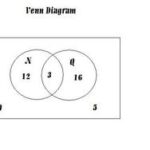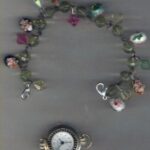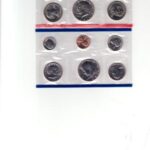It is going to happen. The U.S. Mint dropped the first hints recently that not only had serious consideration been given to replacing the copper and nickel in one cent and five cent coins, but that various metals and alloys were being looked at. Nearly 75 metals and alloys have been, or are being, scrutinized.
The reason is, of course, that the cost of the two existing metals used in the aforesaid coins, combined with the price of minting them, has risen to a point where it now costs the government more to make cents and nickels than the face value of the pieces.
The first signs that one day the copper cent would be replaced by a different metal for that denomination came 25 years ago. The 1982 reduction in the copper composition of the once cent coin from .950 copper to 0.8 copper plated zinc began that year.
Insiders, informed sources, and the proverbial unnamed spokesmen who travel in government and mint circles, suggest it is only a matter of time now before the other shoe drops. And, they tell this writer, expect that to happen sooner than later.
It’s not just a matter of replacing the existing metals with other, less expensive metals,” metallurgist and coin collector John Jackson told this writer. “What ever is used to replace the current copper and nickel alloy used in cents and five cent coins has to have a reasonable ‘shelf-life,’ meaning the minted coins will have to exist in circulation for a long time and still retail an acceptable degree of their original detail. To replace the existing metals with others that wear out and become thin or on which the devices and legends become worn off, is not an option.
“Our circulating coins need to have long life. Go to a bank and get a few rolls of cents and nickels. Chances are you’ll come across still recognizable coins that are more than 60 years old in the lot. That’s longevity.”
Jackson said the other side of the coin (pun intended) is that the replacement metal can’t be so hard it wears out or cracks striking dies, causing expensive replacements. “And there are commercial considerations as well,” he noted. “The billion dollar vending machine industry, parking meters, and the recent proliferation of coin counting machines in several banks, all require weight and the so-called ‘electronic signature’ of coins fed into them.”
From time to time over the years, the U.S. Mint has toyed with replacing various metals, and actually done it, in U.S. coinage. The most remarkable incident was replacing the silver in circulating U.S. dimes, quarters and half dollars in 1965 with clad alloy coins. That move, like the current one being investigated, was due to the rising price of silver which made the silver coins more valuable as bullion melt than they were at their face value.
Prior to that, the U.S. changed the nickel composition of circulating five cent coins for 1942-43-44-45 by replacing the nickel in ‘nickels’ with silver. Nickel was a critical wartime material. Ditto the copper in one cent coins was removed for the same reason in 1943, producing the odd ‘steel’ cents of that singular year.
Actually, the practice of exploring and experimenting with different metals for U.S. coins has a long history. Anyone familiar with Dr. J. Hewitt Judd’s book ‘United States Pattern, Experimental and Trial Pieces’ need only flip through the pages to trace the long history of various metals tested.
The search for substitute metals, or other materials, for U.S. coins bordered on the bizarre during those World War II years when in addition to the zinc-coated steel planchets eventually adopted for the 1943 cents, several other metals and materials had been considered and actually strike tested with coin dies as possible wartime substitutes, i.e.: various other metals plus plastic; Bakelite; glass; hard rubber; and even cardboard. A number of these materials were struck as test pieces by the government and several outside private companies who were given cent coin size bogus or ‘nonsense’ dies. Colt Firearms, and other companies, made these wannabe ‘coins.’
In a feature article I wrote some years ago about the 1943 steel cents, I confident ally noted that “Had there not been a need to conserve wartime copper, it is doubtful most of the materials would have ever seriously been considered for coinage use in peace time.”
I’ll take a serving of humble pie, thank you very much.
Reference:
- Based on personal interviews at the ANA coin Convention earlier this month






